Best Regular Expression Resources to Buy in December 2025
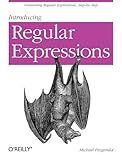
Introducing Regular Expressions: Unraveling Regular Expressions, Step-by-Step
- AFFORDABLE PRICES ON QUALITY PRE-OWNED BOOKS!
- THOROUGHLY INSPECTED FOR GOOD CONDITION – READ WITH CONFIDENCE!
- SUSTAINABLE CHOICE: REDUCE WASTE BY BUYING USED BOOKS!



Regular Expression Pocket Reference: Regular Expressions for Perl, Ruby, PHP, Python, C, Java and .NET (Pocket Reference (O'Reilly))


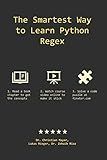
The Smartest Way to Learn Python Regex: Learn the Best-Kept Productivity Secret of Code Masters


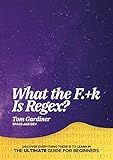
What the F.+k Is Regex?: The Ultimate Regex Guide for Beginners



Parsing with Perl 6 Regexes and Grammars: A Recursive Descent into Parsing


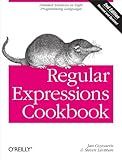
Regular Expressions Cookbook: Detailed Solutions in Eight Programming Languages
- AFFORDABLE PRICES: QUALITY BOOKS WITHOUT BREAKING THE BANK!
- ECO-FRIENDLY CHOICE: SUPPORT SUSTAINABILITY BY BUYING USED BOOKS.
- UNIQUE SELECTIONS: DISCOVER RARE FINDS NOT AVAILABLE IN NEW EDITIONS.


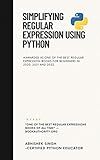
Simplifying Regular Expression Using Python: #Awarded as One of the Best Book in 2020 and 2021 by bookauthority.org


A regular expression, also known as regex, is a powerful tool used in programming to search patterns in text. In PHP, you can create regular expressions using the built-in functions and syntax provided by the PCRE (Perl Compatible Regular Expressions) library.
To write a regular expression in PHP, you start by enclosing the pattern in forward slashes ("/"). The pattern is a combination of characters, special characters, and metacharacters that define the search criteria.
For example, let's say you want to match a simple email address pattern. Here's how you can write a regular expression in PHP:
$pattern = '/^\w+([\.-]?\w+)*@\w+([\.-]?\w+)*(\.\w{2,3})+$/';
Explanation of the above regular expression pattern:
- ^ asserts the start of the string.
- \w+ matches one or more word characters (alphanumeric or underscore).
- ([\.-]?\w+)* matches zero or more occurrences of a dot, dash, or underscore followed by word characters.
- @ matches the "@" character.
- \w+ matches one or more word characters.
- ([\.-]?\w+)* matches zero or more occurrences of a dot, dash, or underscore followed by word characters.
- (\.\w{2,3})+ matches one or more occurrences of a dot followed by 2 or 3 word characters (representing the top-level domain, like .com or .org).
- $ asserts the end of the string.
To use this regular expression pattern for matching, you can utilize PHP functions like preg_match() or preg_match_all(). For example:
$email = 'example@email.com'; if (preg_match($pattern, $email)) { echo 'Valid email address!'; } else { echo 'Invalid email address!'; }
The preg_match() function checks if the given email matches the regular expression pattern and returns either true or false.
Regular expressions in PHP provide a powerful way to search, validate, and manipulate text based on specific patterns. Understanding the syntax and building effective regular expressions can greatly enhance your programming skills.
How to match a specific letter using a regular expression?
To match a specific letter using a regular expression, you can use the letter itself as the pattern. For example, to match the letter "a":
- In many programming languages, you can use the following regular expression pattern: "a".
- In JavaScript or Python, you can use the "test" method of the regular expression object. For example, to check if a string contains the letter "a" using JavaScript, you can do:
let str = "Hello World"; let pattern = /a/; // regular expression pattern let result = pattern.test(str); // test if the string matches the pattern console.log(result); // output: false (because "a" is not present)
str = "banana"; result = pattern.test(str); console.log(result); // output: true (because "a" is present)
- In Python, you can use the "search" function from the "re" module to search for a pattern in a string. For example:
import re
str = "Hello World" pattern = "a" # regular expression pattern result = re.search(pattern, str) print(result) # output: None (because "a" is not present)
str = "banana" result = re.search(pattern, str) print(result) # output: <re.Match object; span=(1, 2), match='a'> (because "a" is present)
These examples demonstrate how to match a specific letter using regular expressions in JavaScript and Python. The same principles can be applied to other programming languages as well.
What is the role of flags in regular expressions and how to use them in PHP?
In regular expressions, flags are modifiers that can be added to the pattern to change the way the pattern is interpreted or executed. They help to specify additional options such as case-insensitivity, treating the input string as a multiline string, performing a global match, and more.
In PHP, flags can be used by passing them as the second argument to the regular expression functions like preg_match(), preg_match_all(), preg_replace(), etc.
Here is an example that demonstrates the usage of flags in PHP:
$string = "Hello World";
// Case-insensitive match preg_match("/hello/i", $string, $matches); print_r($matches);
// Multiline match preg_match("/^Hello/m", $string, $matches); print_r($matches);
// Global match preg_match_all("/o/", $string, $matches); print_r($matches);
In the above example, the /i flag is used for case-insensitive matching, the /m flag is used for multiline matching, and since preg_match_all() is used, there is no need for a global flag.
Output:
Array ( [0] => Hello ) Array ( [0] => Hello ) Array ( [0] => o [1] => o )
Note that there are several more flags available in PHP regular expressions, each having its own specific purpose. You can find more information about them in the PHP documentation for regular expressions.
What are quantifiers in regular expressions and how to use them in PHP?
Quantifiers in regular expressions are symbols or characters that specify the number of occurrences of a given pattern or character in a string. They allow you to match patterns that repeat a certain number of times, or within a certain range of occurrences.
In PHP, regular expression quantifiers are added to a pattern by following the character or pattern to be quantified with a specific symbol. Here are some commonly used quantifiers in PHP:
- "*" (Asterisk): Matches zero or more occurrences of the preceding pattern. Example: /colou*r/ matches "color", "colour", "colouur", etc.
- "+" (Plus): Matches one or more occurrences of the preceding pattern. Example: /go+l/ matches "gol", "gool", "gool", etc.
- "?" (Question Mark): Matches zero or one occurrence of the preceding pattern. Example: /colou?r/ matches "color" and "colour" but not "colouur".
- "{n}" (Exact Number): Matches exactly "n" occurrences of the preceding pattern. Example: /go{2}d/ matches "good" but not "god" or "goood".
- "{n,}" (At Least Number): Matches "n" or more occurrences of the preceding pattern. Example: /co{2,}l/ matches "cool", "coool", etc., but not "col" or "coul".
- "{n,m}" (Number Range): Matches between "n" and "m" occurrences of the preceding pattern. Example: /c{2,4}a/ matches "ca", "cca", "ccca", or "cccca", but not "c" or "caaa".
Additionally, there are some special quantifiers like "*" or "+", when followed by a "?" character, they become lazy quantifiers. They match as few occurrences as possible. Example: /go+?d/ matches "god" in the string "good", whereas /go+?d/ would match "good" as a greedy quantifier.
To use these quantifiers in PHP, you generally use the preg_match() function along with the regular expression pattern. For example:
$string = "color"; $pattern = "/colou*r/"; if (preg_match($pattern, $string)) { echo "Match found!"; } else { echo "No match found!"; }
This would output "Match found!"
How to use backreferences in regular expressions?
Backreferences in regular expressions allow you to refer to a previous matched group in your pattern. They are useful when you want to find repeated words, characters, or patterns.
To use backreferences in regular expressions, you need to follow these steps:
- Start by defining a group using parentheses () in your pattern.
- Use the backslash \ followed by a number to reference the group you want to match again.
Here's an example of how to use backreferences:
import re
text = "I've been to to many places around the world."
Use \1 as a backreference to match repeated words
pattern = r"\b(\w+)\s+\1\b"
matches = re.findall(pattern, text) print(matches) # Output: ['to']
In this example, the pattern \b(\w+)\s+\1\b searches for repeated words. Let's break down the pattern:
- \b: Matches a word boundary to avoid partial word matches.
- (\w+): Defines a group to match one or more word characters.
- \s+: Matches one or more whitespace characters.
- \1: A backreference to the content matched by the first group, which is the repeated word.
- \b: Matches another word boundary.
So, the pattern will only match if a word is followed by one or more whitespaces and the same word appears again later in the text.
Using backreferences allows you to find and work with patterns that are repeated within the same string, making regular expressions more powerful and flexible.
What is the role of boundary assertions in regular expressions?
The role of boundary assertions in regular expressions is to specify certain positions or boundaries within a string where a match can occur. They are used to define the start or end of a word, line, or any other element within the text being matched.
Boundary assertions do not consume characters or contribute to the overall match, but rather match a position in the string. They are useful for ensuring that a pattern is found only at specific positions and not within other parts of the string. For example, a common use of boundary assertions is to match an entire word rather than just a substring within a word.
Some commonly used boundary assertions include:
- ^ (caret): Matches the beginning of a line or string.
- $ (dollar sign): Matches the end of a line or string.
- \b (word boundary): Matches a position where a word character (letters, digits, or underscore) is followed or preceded by a non-word character.
- \B (non-word boundary): Matches a position where a word character is not followed or preceded by a word character.
By using boundary assertions, regular expressions can be more precise and specific in finding matches, allowing for more accurate pattern matching and text manipulation.
